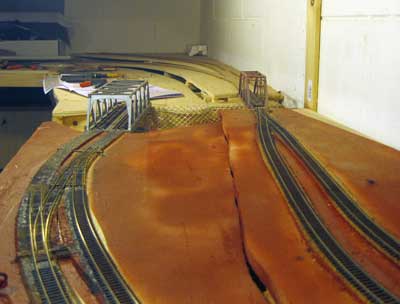

- TAM VALLEY OCTOPUS III WITH ROCRAIL INSTALL
- TAM VALLEY OCTOPUS III WITH ROCRAIL DRIVERS
- TAM VALLEY OCTOPUS III WITH ROCRAIL DRIVER
- TAM VALLEY OCTOPUS III WITH ROCRAIL MANUAL
- TAM VALLEY OCTOPUS III WITH ROCRAIL CODE
The "R" and "B" power connections are common for all LEDs and buttons through one connection to the octocoder control pins. The control connections are made through the pins on the octocoder, the wires between the octocoder and the remote panel are about 20 inches long. Yaasan's Desktop Station/Railuino & Marklin MS2, DB Era III/IV Diesel & Steam, ESU Loksound/Lokpilot & Lokprogrammer, Marklin mSD, Tam Valley Depot Octopus III Servo Controller. With no LEDs or buttons connected, the octocoder works as expected. However, issuing DCC accessory commands to the octocoder via NCE PowerCab will only move the machine from normal to reverse, but not back to normal. In the reverse (thrown) position, the reverse LED illuminates, but at a reduced brightness - I am using the same yellow LEDs for both indicators. Just one of these needed for all of your Octopus IIIs. In the normal (closed) position, the normal LED illuminates. Used with the Octopus III for alignment of servos (cannot be used with the Octopus II). I've connected LEDs and buttons as shown in the octopus documentation - mashing the two schematics: The push button causes the switch machine to move between normal and reverse as expected. Goal: To be able to operate servo-switch machines via DCC accessory commands and local control panel with buttons and indicator lights. Can this be made to work, or do I need to choose either DCC or push button control but not both? I had hoped to add a local panel for the other octopus/octocoders used on the layout. The control connections are made through the pins on the octocoder, the wires between the octocoder and the remote panel are about 20 inches long. In the normal (closed) position, the normal LED illuminates. Power is input through a bridge rectifier which allows the use of DC or AC voltage. Learn more about the SX chip and SX/B, the BASIC language for SX at the Parallax website.
TAM VALLEY OCTOPUS III WITH ROCRAIL CODE
Goal: To be able to operate servo-switch machines via DCC accessory commands and local control panel with buttons and indicator lights. (This is for the Original Octopus based on the SX chip) The control code in SX/Basic can be downloaded by clicking here. Just go to the link above, & you can watch there video's & see the setup/adjustment & operation., they are on you tube as well.From: On Behalf Of Sent: Tuesday, J7:51 AM To: Subject: Octopus III / octocoder with remote buttons and lights Once I have the mounting brackets & wire, I will post pictures & video of the two mounting options. The cost works out to be just over $20 NZD to control 16 servo's (8 servo's per servo driver)

So there are many automation's you can add to your model railway world. You can make a coaling crane swing around or a water spout, of which I plan to do as well. The other advantage of this system, is you can use them to control other items. The advantage of this system is cost effectiveness, ease of installation (very easy if track not ballasted), & slow motion point control. The Remote Aligner was used once which is why it's mounted on a custom plywood stand to make it easier to hold. (My layout plans have changed and I won't be needing these.
TAM VALLEY OCTOPUS III WITH ROCRAIL MANUAL
I played around with the servo's just to get an idea of the range of adjustment etc, and found how easy it is to set up. Also includes a (single turnout) Singlet w/servo and a full sized Octopus manual (for turnout setup).
TAM VALLEY OCTOPUS III WITH ROCRAIL INSTALL
I have found I can install with track in place, and have 2 options to do this.
TAM VALLEY OCTOPUS III WITH ROCRAIL DRIVER
There is a DCC driver for those who want digital control. I purchased mounting kits & servo's off eBay, real cheap.Īs I prefer manual type point motor control Octopus III was just right.
TAM VALLEY OCTOPUS III WITH ROCRAIL DRIVERS
I opted for the Octopus III servo drivers and the remote alignment tool & fascia controller's. They make servo drivers for miniature SG90 model servo's, and misc accessories. I decided to look for an alternative motor option where I do not have to rip up the track, and can retrofit a system with reasonable ease.Īfter some research on the net, I came across After a number of Marklin turnout motor failures, and in recent, just where I have just ballasted track.


 0 kommentar(er)
0 kommentar(er)
